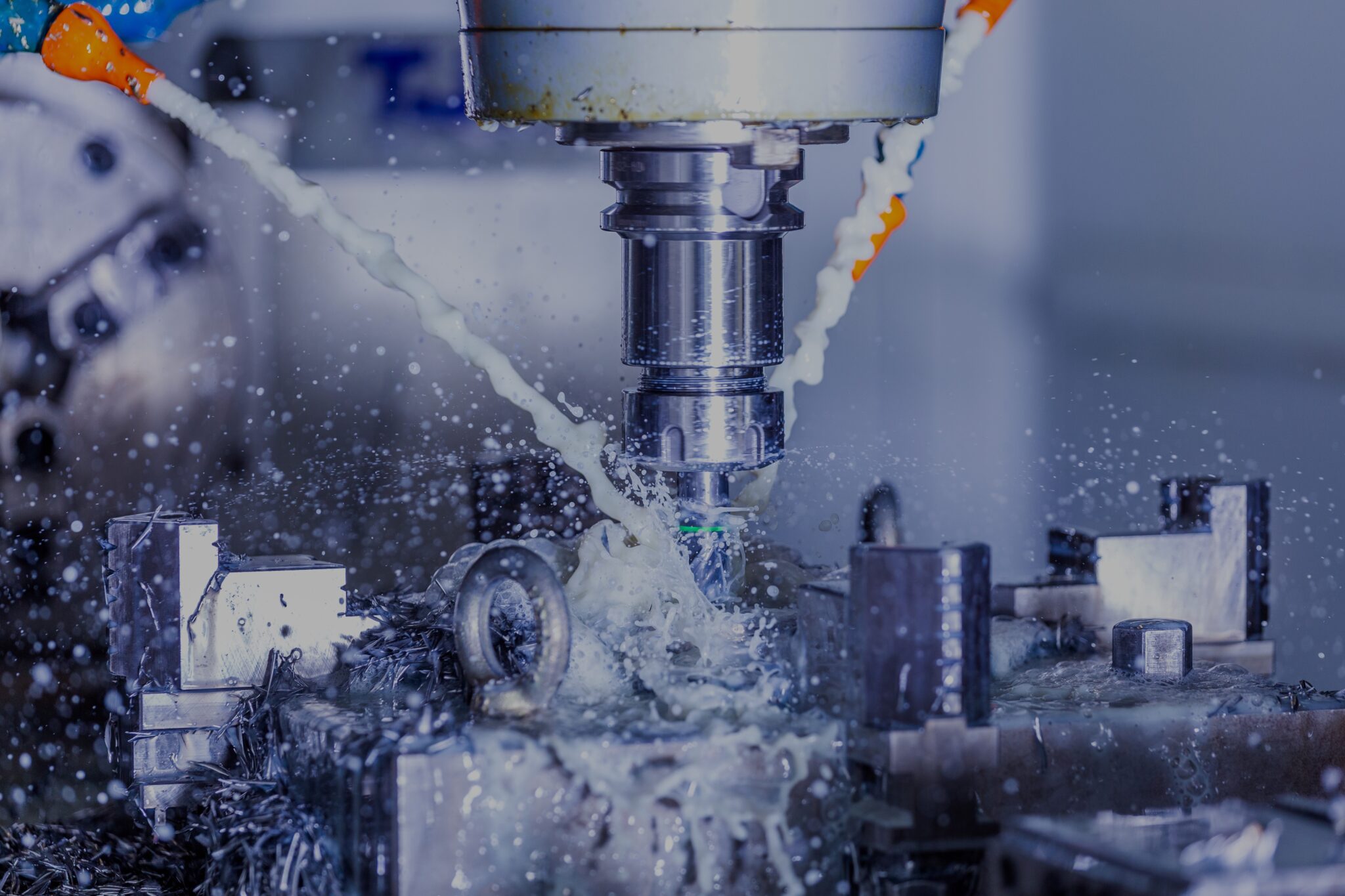

Originally published on fastradius.com on December 17, 2020
A computer numerical control (CNC) machine is a device programmed to transform numerical code into Cartesian coordinates in order to transform raw material into a finished part. CNC milling is a specific type of CNC machining that leverages computerized controls and a milling machine to progressively remove material from a solid block in order to produce a part. A milling machine is similar to other drilling machines in that it’s intended to cut and drill material.
However, milling machines differ from standard drilling machines in that they’re able to cut in different angles and move along different axes. Technically, there is no limit to the number of axes a milling machine can have, but most are commonly referred to as 3-axis, 4-axis, and 5-axis machines. CNC milling is suitable for use with numerous materials, including glass, metal, plastic, and wood.
Like most CNC machining processes, milling relies on computerized controls to operate the tools that cut and shape stock material. However, unlike most other CNC subtractive manufacturing processes, CNC milling is a mechanical process, which means that material is removed from the workpiece via mechanical means rather than chemical, electrical, or thermal means.
The milling process encompasses the same steps as most other CNC machining processes, which include the following.
There are two common techniques of CNC milling: conventional milling and climb milling. Traditionally, conventional milling has been more frequently used. Conventional milling is when the tool is cutting in the opposite direction the tool is traveling. For decades, this was the preferred method for machiners, as it can be more forgiving on less precisely made machines. While conventional milling is still useful in certain situations, it’s worth noting that it involves quite a bit of rubbing and friction. This wear can shorten the tool’s lifespan; it also means that the workpiece requires tighter clamping and fixing.
For these reasons, climb milling tends to be favored today. Modern milling techniques such as high dynamic milling (trochoidal milling) leverage climb cutting with large axial depth of cut and small radial stepovers to produce very efficient milling strategies. Climb milling with dynamic toolpaths produces a thinner cutting chip with less rubbing and friction, which prevents the workpiece from overheating and extends the tool’s life. As an additional benefit, the workpiece also requires less clamping since cutting forces are typically reduced.
CNC milling, like other CNC machining methods, offers numerous advantages. Some of the most notable include its precision, its replicability, and its low labor costs.
However, milling does have a handful of drawbacks. One is the high upfront cost of the machinery, as product teams must either invest in expensive CNC milling machines up-front or outsource services to a trusted manufacturer. It also requires specialized training to perform successfully, complicating the process should teams choose to invest in their own machinery.
A highly versatile process, CNC milling can be used to create parts out of a wide range of materials. Effective material selection, of course, comes down to the requirements of a specific project, but all of the following materials are suitable for milling:
While CNC milling is suitable for a breadth of materials and can be very cost-effective, it is not necessarily appropriate for every manufacturing application. A number of other manufacturing processes are compatible with CNC technology.
CNC turning, is similar to CNC milling, but the processes differ in several key respects. While CNC milling uses a rotating tool, CNC turning uses a rotating part and a cutting tool which does not rotate. CNC turning creates parts with round cross sections, while milling is typically used with prismatic parts. Complex parts that have both prismatic features and features of circular cross section can be made using multiple setups on both milling and turning centers, or on Mill-Turn or MultiTasking machines that combine both milling and turning operations in a single piece of equipment.
Pure turning is more commonly used for simple, cylindrical parts like shafts, hollow tubes, or conical shapes. While these shapes could be made with a milling machine, it’s typically faster, more efficient, and less costly to create these parts using turning.
Ultimately, it’s up to product teams to determine which manufacturing method is best-suited to their project’s unique requirements. And choosing the best manufacturing method to suit your needs can be difficult — and making the wrong choice can result in expensive delays, wasted material, and a subpar product.
For these reasons, it’s wise to partner with a trusted manufacturing team like SyBridge Technologies. At SyBridge Technologies, it’s our goal to help customers achieve exactly the results they desire — at a competitive price point and timeline. Contact us today if you’re ready to get started.
Forget typical cycle times. We're pushing the boundaries of conformal cooling. While traditional approaches deliver…
Forget typical cycle times. We're pushing the boundaries of conformal cooling. While traditional approaches deliver…
From left to right: Brayden Janak (apprentice); Logan Vifaquain (CNC machining, Programming and CMM); Ron…
SyBridge Technologies is proud to announce we have been awarded the 2023 General Motors Supplier…
Today, designers and engineers are accustomed to working with digital tools in their day-to-day jobs.…
Optimizing Your Injection Molding Process for Cost-Effective Manufacturing Excellence In today’s competitive landscape, manufacturers are…